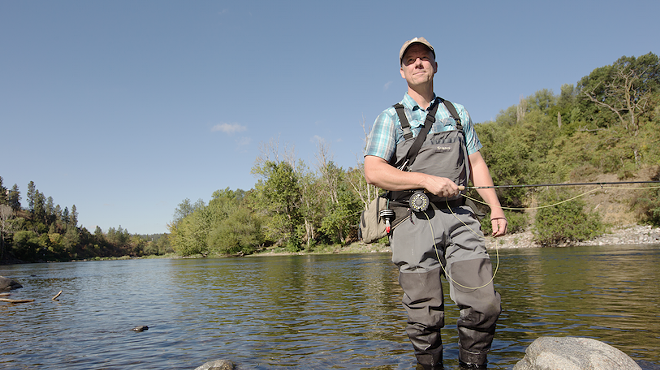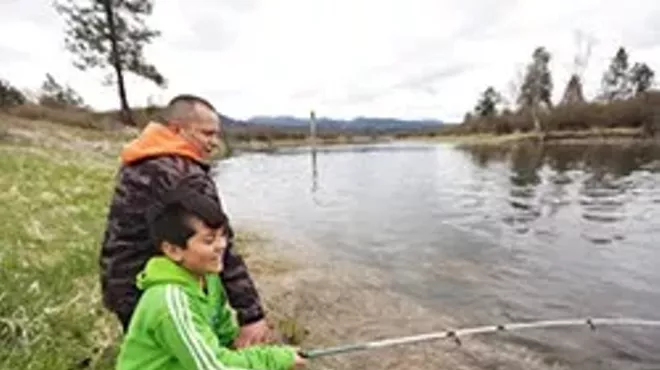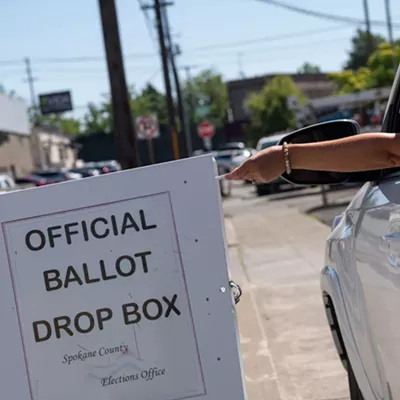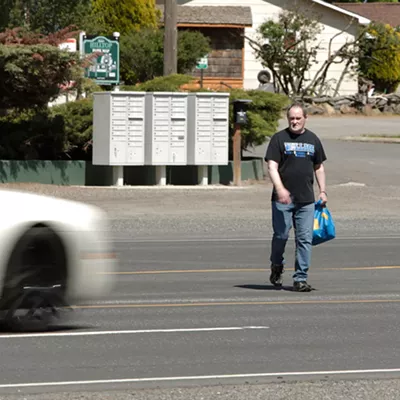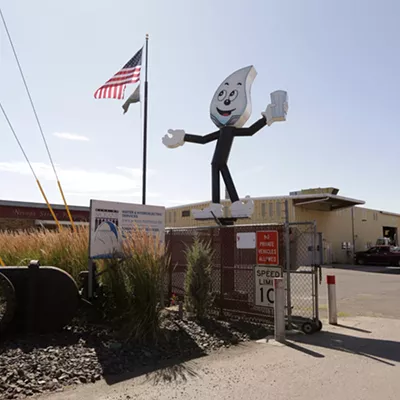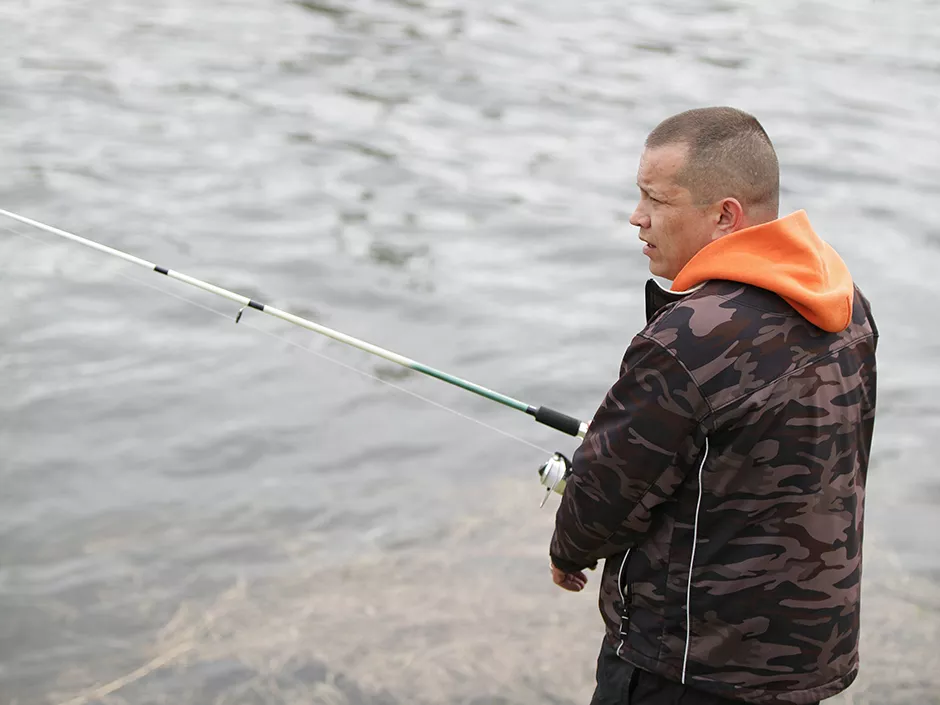
An osprey glides over a stream off the Pend Oreille River on the Kalispel Reservation. Tribal vice-chair Ray Pierre, boots planted in the muddy, weedy shore, flicks his fishing rod, sending a line soaring into the current.
His three youngest kids scurry about on the rocks, casting their own lines from child-size poles and inevitably getting them tangled in the weeds.
Pierre remembers, decades ago, catching whitefish at this spot as a teenager, then barbecuing them over a smoker built from a wire bed frame, chicken wire and a hole in the ground. “We’ve always been connected to the river,” Pierre says. “[But] a lot of stuff that’s happening now is keeping people away from the river. We’re getting disconnected.”
First the hydroelectric dams rose up, cutting off the supply of salmon. More recently came non-native predators like the northern pike, gobbling up smaller native fish and breeding like crazy. But now, even eating those fish carries a toxic risk.
Pike isn’t all that tasty. Pierre finds it mushy, bony and bland. But just like the food he hunts, he wanted to eat what he caught.
“We would catch a pike and, heck yeah, we were going to eat it,” Pierre says. One time, they trucked huge amounts of pike to the food bank in Newport — and the food bank loved it. But in 2004, the state’s Departments of Health and Ecology began running tests, checking Pend Oreille pike for toxins like mercury and cancer-causing polychlorinated biphenyls. The tests found elevated levels of mercury, especially in the bigger fish. The Department of Health warned anyone in the Pend Oreille area to avoid eating larger pike at all.
But for many tribal members, state and local warnings won’t change a thing about their diet.
“Just because some big-shot tribal fish biologists are telling tribal members that they shouldn’t be eating fish, that doesn’t mean they’re not going to be eating fish,” Pierre says.
This Thursday, as tribal chairs across Washington state meet with the Environmental Protection Agency and the state Department of Ecology, the toxicity of fish will dominate discussion. Specifically, they’ll tackle the “fish-consumption rate,” an innocuous-sounding statistic fraught with environmental and economic consequences.
The basic science is simple. Depending on the dose, anything — arsenic, botulism, chocolate sauce — can be dangerous or harmless. Toxins in fish aren’t as problematic if they’re eaten very rarely. Washington state’s water-quality standards, therefore, rely on assumptions about how much fish people eat.
But in its current water-quality standards, Washington assumes each person only eats 6.5 grams of fish per day. That’s about half the amount that would fit on a soda cracker — one-thirtieth of a single plate of seafood at Anthony’s restaurant. The figure’s a national average, left over from a Department of Agriculture survey in the 1970s that included those who never ate fish.
Local tribes say the number is wildly inaccurate. In the 1990s, surveys of four Indian tribes on the Columbia River showed the average tribal member ate nearly 10 times more fish than that.
The run-of-the-mill tribal member, Pierre says, may not care about all the numbers, but they care about what they can eat. “Do we want to eat that much fish?” Pierre says, a tiny dime-sized space between his thumb and finger. “No, we’re going to eat a lot more than that. We want to eat this much fish. That’s the best way I can explain it to tribal members.”
For the Spokane tribe, eating fish is just as culturally essential. “We were known as the fishing people,” Spokane tribal chairman Rudy Peone says. “We were actually called salmon-eaters by other tribes.”
Many members of the Spokane tribe, Peone says, “have high rates of diabetes and other medical issues. Some people think it’s because we haven’t been able to eat [as much] fish.”
Both the Spokane and Kalispel reservations use higher fish-consumption rates within their borders. For those upstream, those standards can carry legal weight. In March, for example, the Sierra Club challenged the permit the Department of Ecology gave to Spokane County’s new sewage treatment plant, arguing it would pump out toxins in violation of the Spokane tribe’s high fish-consumption standards.
But enforcement is hard. “Our water-quality standards are broken daily,” Pierre says. If the whole state had stricter standards, he believes, the fish at the reservation would gradually become healthier.
The EPA and Department of Ecology agree the state’s fish-consumption number is in dire need of updating. It’s up to Ecology to find one.
Updating that number is more complicated than just taking a survey. The fish-consumption rate is supposed to include shellfish, but not primarily ocean-dwelling fish like salmon. And instead of just using a state average, EPA wants to measures diets of groups that eat fish substantially more often.
If Ecology chooses a number that’s too low, the EPA might not accept it. When Idaho tried to adopt a new daily fish consumption rate of 17.5 grams — nearly triple Washington’s — the EPA rejected it, pointing to proof that some Idaho populations ate far more than that. By contrast, in 2011 Oregon bumped its rate up to 175 grams per person per a day.
But a higher rate means more restrictive pollution limits, and that could cost industry a fortune. It’s pitted environmental groups and Indian tribes against powerful businesses like Boeing and Inland Empire Paper Company, with Ecology stuck in the middle.
“It’s probably the most difficult work that I’ve observed at the Department of Ecology,” says Ecology spokeswoman Sandy Howard. “The tribes feel we’re not moving fast enough. We have very large companies in our state that are really squawking about it.”
Since 2011, as part of its overhaul of sediment rules, Ecology has considered revising its fish consumption rates. But Republicans like Spokane Valley state Sen. Mike Padden sent a stream of emails to the governor, fretting about the impact on business.
Internal emails obtained by journalists from the nonprofit InvestigateWest show the governor’s office and Ecology worried about airplane giant Boeing’s reaction.
“Boeing suggested the path Ecology is currently under will cost the company hundreds of millions of dollars,” one of former Gov. Chris Gregoire’s aides wrote.
Boeing spokesman Chris Villiers says the company is looking for “a balanced solution… that’s technologically feasible and economically viable and doesn’t affect the aerospace industry in Washington.”
On a photo on Spokane’s Inland Empire Paper website, a clear waterfall cascades past mossy boulders. “Our first and foremost concern is the protection of our environment,” the site says, touting several hundred million dollars of investment toward cleaner technology. But in January of last year, Inland Empire Paper sent a comment urging “Ecology to suspend development of default statewide fish consumption rates … until a more thorough scientific evaluation can be performed to assess any public health benefits.”
In an email, Inland Empire Paper’s Doug Krapas says the company isn’t opposed to new standards, but he wants to be sure it’s possible for business to meet them. (Disclosure: The Inlander is printed on Empire Inland Paper.)
Ultimately, Ecology won’t issue even a draft of the new fish-consumption standards until next year. A ream of internal emails published by InvestigateWest indicates the process has been slowed by political concerns, but Howard objects to calling it a delay. “We’re not taking the foot off of the gas, it’s [just] going to be a little longer ride than people wanted,” the Ecology spokeswoman says.
The slow pace has left many jaded. According to the EPA, most tribes won’t be participating in the state’s rulemaking process this time.
“We’re really disappointed,” says Deane Osterman, the Kalispel’s executive director of Natural Resources. “Delay only increases the harm to people disproportionately impacted by eating toxic fish. … This is an environmental justice issue.”
But for others, the issue is as basic as the food on their plate.
“I was trying to educate the wife about [fish-consumption rates] and all this stuff,” Pierre says. “And she was saying, ‘I just want to catch some fish to feed the boys.’”



